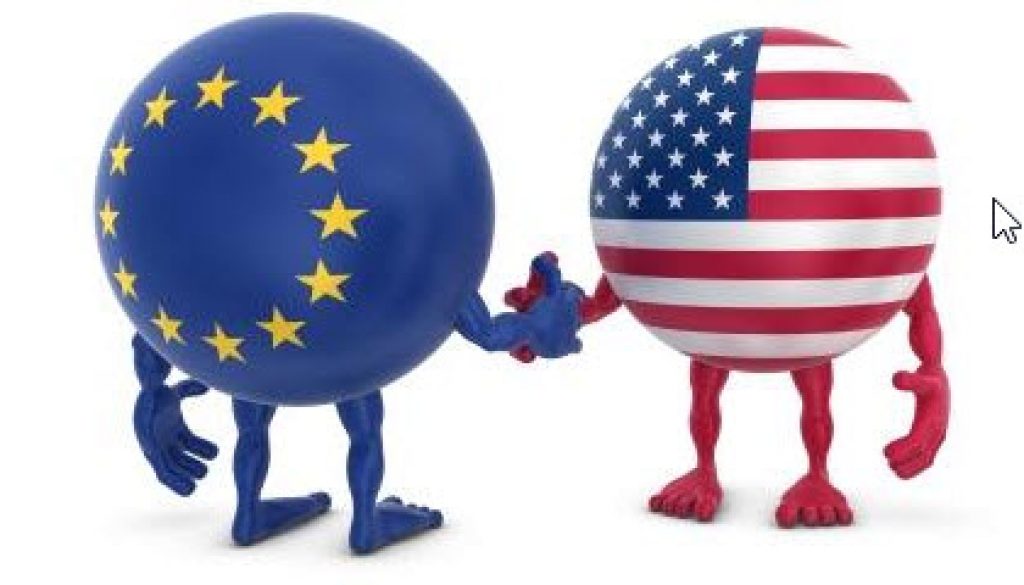EU-US Free Trade Agreement
EU-US Free Trade Agreement talks are underway between the United States and the European Union to improve US-EU free trade. Meanwhile, many in the US are concerned continued trade with Mexico might suffer in the next few years. While current political rhetoric leads some to question whether NAFTA might be scrapped or tariffs with Mexico raised to 35%, it is insightful to see the level of consistency in the terms found in NAFTA and in the developing Transatlantic Trade and Investment Partnership (TTIP) with the EU.
US Trade with the EU
EU-US Free Trade Agreement has been preferential for many years, and the developing TTIP agreement will only enhance this. The two economies already have trade agreements in place providing very low tariff rates of typically less than 3%. The US and EU partner in many ways along the value chain of global manufacturing. In fact, the US typically invests three times as much in the EU as in Asia. Likewise, the EU typically invests eight times as much in the US as in China and India combined. The two economies are highly integrated, and nearly a third of all world trade flows are the result of US-EU free trade.
The TTIP Explained
There is currently an agreement being negotiated to stimulate US-EU free trade even further. The deal is called the Transatlantic Trade and Investment Partnership or TTIP. Among the goals of the TTIP are:
- To promote trade between the two economic giants and multilateral economic growth
- To reduce or eliminate import/export duties between the two economies
As with NAFTA, which the US agreed to with Canada and Mexico in the early 1990s, the TTIP will allow goods to be exchanged with virtually 0% tariffs and minimal regulatory obstacles. By some estimates, the EU will enjoy benefits of approximately €120 billion and the US of approximately €90 billion thanks to the agreement. Globally, the deal will bring benefits of at least another €100 billion.
EU-US Free Trade Agreement
These arrangements with US trade partners in Europe are no anomaly. The EU-US Free Trade Agreement relationship of highly integrated cooperation and reduced or eliminated tariffs can also be found in other US trade agreements, such as the North American Free Trade Agreement (NAFTA) with Canada and Mexico.
Speculations of abandoning NAFTA and even raising tariffs with Mexico to 35% notwithstanding, the attitude towards trade partners in Europe has been consistent with the US policy towards Canada and Mexico. In many ways, the integrated partnership between the US and the EU reflects the US partnership with fellow NAFTA signatories, Canada and Mexico. What the US does for one, it will most likely do for the other. Because we see such friendly US-EU free trade practices, we will most likely continue to see friendly trade practices between the United States all of its trade partners – including Mexico.
For additional information follow our blog at our parent company, http://tecma.com





